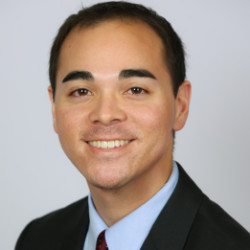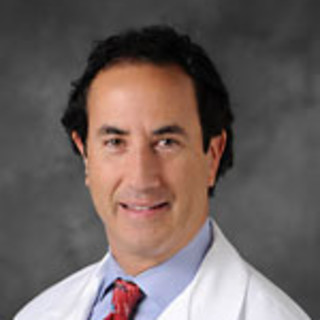The use of radiation therapy for nonmalignant (also called "benign") disease has made a resurgence in the U.S. in the year preceding the 67th Annual Meeting of the American Society for Radiation Oncology (ASTRO). In this year’s theme, "Rediscovering Radiation Medicine and Exploring New Indications," the use of the phrase "radiation medicine," rather than "radiation oncology" intentionally pushes us to think of radiation as a treatment modality with broader uses beyond cancer. The patients sitting in our waiting rooms are no longer just cancer patients, despite receiving services from a radiation “oncology” department. What we call our departments can profoundly affect how patients feel when they pass through our doors.
The use of the term "nonmalignant" instead of "benign" also acknowledges the fact that there is nothing benign about the debilitating pain associated with osteoarthritis, or the decreased survival of a patient with a serious cardiac arrhythmia, as Dr. Sameer Keole, outgoing ASTRO president, mentioned in his opening address. In this arena, multiple research studies conducted globally were presented showing the efficacy of low-dose radiation for osteoarthritis with durable pain relief and minimal side effects.
Ironically, with 32 million Americans affected, the research on low dose radiotherapy (LDRT) for osteoarthritis has primarily come from outside the U.S. I was excited to hear the results of the South Korean placebo controlled trial at the clinical trials session that revealed a 70% response rate to LDRT for painful knee osteoarthritis compared to 47% in the placebo group. This was the best and largest controlled study I’ve seen showing a significant benefit in pain reduction with LDRT for knee osteoarthritis. Although osteoarthritis was the most common nonmalignant ailment discussed during ASTRO, there are many additional musculoskeletal conditions that can be treated with radiation including plantar fasciitis, achilles tendinitis, trochanteric bursitis, Dupuytren’s contracture, heterotopic ossification, and pigmented synovitis.
Besides musculoskeletal conditions, research findings demonstrated how radiation therapy can treat ventricular tachycardia using ablative stereotactic body radiotherapy (SBRT – a very focused form of high dose radiation), with comparable arrhythmia control compared to repeat catheter ablation with fewer complications. The use of SBRT to treat movement and mood disorders generated significant interest during the meeting, further underscoring the broader uses of radiation in neurology and psychiatry. In addition to excitement about treating cardiac arrhythmias, movement disorders, and psychiatric disorders, the depth of nonmalignant disease that can be treated with radiation also includes keloids, gynecomastia, hyperhidrosis, hypersalivation, and Graves ophthalmopathy. Over the past year, I have grown to appreciate how radiation is a therapeutic tool that can treat many medical conditions outside of oncology (having incorporated LDRT for osteoarthritis in my own practice), but this ASTRO meeting sealed it. Radiotherapy for nonmalignant disease is here to stay.
The use of radiopharmaceutical therapy (RPT) was another popular theme during the meeting with educational workshops, industry symposia, research presentations, and promotion of ASTRO's safety white paper on RPT. Of note, the LUNAR randomized trial added a prostate-specific membrane antigen-targeting radiopharmaceutical (Lutetium-177) before metastasis-directed SBRT in patients with recurrent oligometastatic prostate cancer, a combined approach which more than doubled progression-free survival compared to SBRT alone (median ~17.6 versus 7.4 months).
And of course, artificial intelligence captured lots of discussion. In addition to AI being used for clinical documentation and autocontouring, adaptive radiation therapy sessions showed how radiation treatment plans could be generated in real time with the patient on the treatment table, adjusting for tumor shrinkage, organ motion, or physiologic changes. Vendors revealed the incorporation of advanced imaging hardware (higher resolution CT scans requiring less acquisition time and radiation exposure) with adaptive radiation therapy platforms. Although this is exciting technology, I often wonder how much more precision we need to target tumors accurately and at what cost, especially for conventionally fractionated treatments.
Other scientific highlights included the noninferiority of 5-fraction SBRT for the treatment of intermediate risk prostate cancer compared to moderately hypofractionated (20 to 28 fractions) IMRT (intensity modulated radiation therapy) (NRG Oncology GU-005 trial), a finding that is viewed as practice changing. Patients who would struggle to comply with five to six weeks of daily radiation treatment can (if they are properly selected) complete treatment in one week — a win for access to care and lessening the burden of travel.
One of the highlights of the meeting was the keynote by Dr. Bobby Mukkamala, president of the American Medical Association. He spoke of his practice in Flint, Michigan (his hometown) as a solo independent otolaryngologist in an underserved community, and how his own medical journey after being diagnosed with a brain tumor helped him appreciate the inequities in health care access. As a son of a radiologist father and pediatrician mother, he was inspired by their commitment to taking care of the people of Flint, MI after immigrating from India. With so many graduating residents heading to big cities to practice, exacerbating the physician shortages in rural communities, I often wonder how our immigrant parents seemed to be more adventurous in their willingness to settle and grow roots in communities so different from where they came.
The themes that Dr. Mukkamala explored tied in nicely with the health policy topics presented at the meeting. There were updates and robust discussion of the dire consequences of what the Medicare Physician Fee Schedule and Hospital Outpatient Prospective Payment System proposed rules would cause if implemented as written — an issue that affects many medical specialties besides radiation oncology. The Radiation Oncology Case Rate Act, designed by ASTRO, was introduced in Congress this year to stabilize Medicare payments by moving away from a fraction quantity based fee for service system to an episode based system. As a radiation oncologist practicing in an independent group in a rural health professional shortage area, I appreciate how this new payment model (although not perfect) serves to protect the most vulnerable practices serving rural communities, as we continue to lose revenue from shorter radiation treatment courses. ASTRO PAC, ASTRO's political action committee, highlighted its advocacy work on Capitol Hill defending and protecting the value of radiation treatment services. With independent practices struggling to stay viable while dealing with insurance denials, prior authorization, and reimbursement cuts in the face of inflation, medical society PACs provide a valuable service by protecting the viability of physician practices.
ASTRO 2025 showed that radiotherapy has a bright and active future. Radiation medicine is expanding — radiating in multiple established directions, and in directions we are only now beginning to imagine. We are more than oncologists. We are physicians who are experts in harnessing the physics of radiation to treat both malignant and nonmalignant disease. Kudos on a successful meeting!
Dr. Join Y. Luh is a radiation oncologist practicing in the Pacific Northwest town of Eureka, CA. He enjoys mountain biking, surfing (on a paddle board), playing in a cover band (StereotactiX), reading his daughter’s essays, and cheering his sons at basketball. Dr. Luh is a 2025-2026 Doximity Op-Med Fellow.
Image by Kiki hadi Supriyanto / Getty Images







